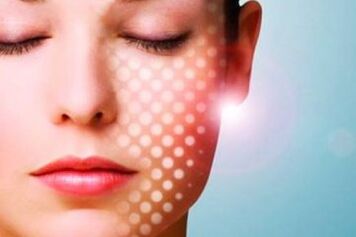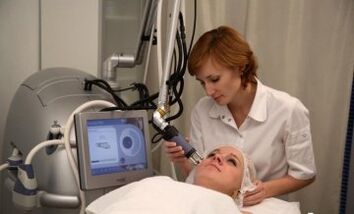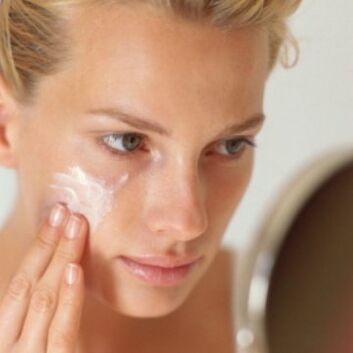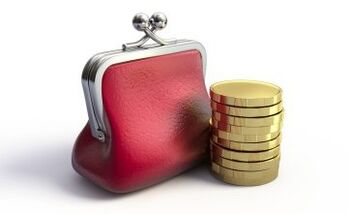
Fractional thermolysis (fraxel) is a method of laser resurfacing of the face and body that helps to deal with stressful and age-related skin problems.
This procedure is almost as effective as the surgical device and, after thermolysis, the skin cells begin to actively produce, as in youth, collagen and elastin, that is, beneficial changes occur in several layers at once, and not just in the outer epidermis.
The procedure is very effective, but at the same time traumatic. It can only be performed in specialized clinics.
What is it - fractional photothermolysis, what is the essence of the method and effectiveness, indications and contraindications for procedures on the face and body using fraxel technology, before and after photos, consequences and comments on the laser procedure, estimated prices and which devices are used - all this we will try to tell you more.
General information
Thermolysis refers to the process of structural tissue destruction under the influence of high temperatures. The concept was created and mediated by doctors and then introduced into use by cosmetologists.
And photothermolysis is also the process of thermolysis, but it's caused by exposure to light energy. In cosmetology, it is used during photoepilation and laser "resurfacing" of scars and scars.
Fractional photothermolysis is a technique in which photothermolysis does not affect the entire surface of the skin, but only its individual areas. This means that we can talk about focal tissue destruction by heating them with the help of laser energy (light).
The essence of the procedure and other names
The fractional photothermolysis procedure is classified as a form of negative skin stimulation, since a certain type of lesion is applied during the session, in this case burns.
To achieve the expected cosmetic result, you need to start the regeneration process, which restores the skin after damage.
A thermal burn of this type looks like a "column", which is formed in the thickness of the dermis under the targeted action of laser beams. This "column" in cosmetology is called the "microscopic treatment zone", or for short - MLZ.
In diameter they cannot reach more than a tenth of a millimeter: from about 0. 1 to 0. 4 mm, with a penetration depth of up to 0. 5 mm. Depending on the type of procedure chosen, from ten to several thousand of these microtraumas can be located on one square centimeter of the surface, while the impact rate is 3, 000 MLZ/s.
If we look at the mechanism of action of fractional photothermolysis, it is similar to mesoscooter therapy, but when using a roller, microdamage is mechanically applied using needles.
In the practice of cosmetology, the concept of fractional thermolysis has several commonly used synonyms:
- dermal optical thermolysis;
- DOT therapy;
- fractional laser "polishing";
- LAFT rejuvenation;
- fractional laser nanodrilling;
Ablative and non-ablative method
Laser ablation is the evaporation of a substance using a laser pulse. When using ablative fractional photothermolysis, choose a type of laser radiation whose energy is primarily absorbed by water molecules.
During a short-term impact on a localized area, the laser beam almost immediately heats the water contained in the tissues, up to 300C. Due to this, the entire "column" evaporates, and in its place a microscopic wound of the open type is formed, surrounded by layers of thermally coagulated cells.
After ablative photothermolysis, recovery will be much slower and longer than with a non-ablative method.
But the results of the procedure will be objectively better and the lifting effect will be clearer. It is best to use a course of 2 to 6 sessions. But during these procedures, the patient is exposed to a certain risk of tissue infection in the deep dermal layers.
Non-ablative fractional thermolysis can be attributed to milder microtrauma techniques. A laser beam is used, which practically does not damage the epidermis, burns form under it.
Destroyed tissues do not evaporate, but remain inside the "spine", naturally, there are no open wounds. The facelift is not as obvious as with the first ablative method, as the cellular breakdown products were not removed at the time of the procedure, which means that there is no "tightening" effect on the skin.
It is recommended to use courses of 3 to 10 sessions. For the patient, there is practically no risk of infection of the deep dermal layer, as there is no violation of the integrity of the surface.
indications, effect
Indications for marking a procedure using Fraxel technology can be the following reasons:
- the need to stimulate withered and aged skin;
- treatment of pigmented/depigmented lesions;
- get rid of scars, after acne and small scars;
- the need to remove stretch marks.
It is not suitable for getting rid of keloid formations.
Benefits
How does this method differ from classic "polishing" with a laser? With the traditional approach, the burn affects a large area, and with fractional exposure, it has a localized and punctual character.
Among the burn injuries, there are spaces with intact skin, which makes photothermolysis less traumatic and accelerates healing time.
The method is suitable for treating any part of the body, but in most cases it is used specifically for the face. By using Fraxel technology, the beautician can work even with the skin of the eyelids.
A feature of this optical thermolysis of the dermis is the innovative design of the DOT device itself, which makes it possible to avoid lost skin areas or overlapping of one area over another.
Mechanism of action
In the preliminary consultation, the cosmetologist determines the goals that the client wants to achieve, discovers possible contraindications to the procedure, talks about the possible results and their compliance with the client's expectations.

The doctor will certainly make a point about the risks and development of post-procedure complications, as well as how to care for the skin after undergoing a course of photothermolysis.
It is necessary to discuss in advance and choose the appropriate method of pain relief, and the client should certainly report allergic reactions to medications, if any.
A few hours before the session, a superficial peeling is performed, whose objective is to standardize the thickness of the stratum corneum of the skin.
During the operation, the patient may experience moderate pain and discomfort. Its severity cannot depend on the model of the device used. The level of pain is based on the depth and intensity of the laser beam, and these parameters are determined by the specialist himself, with a focus on therapeutic goals.
The more neglected the problem, the deeper layers need to be affected.
But common creams with an anesthetic effect are usually used as anesthetics, which are applied to the work areas no more than 40 minutes before the start of the session.
During the session, the cosmetologist moves a nozzle over the surface, which emits a targeted laser beam. If such a need arises, the same area is treated repeatedly within the same procedure.
The duration is 15 minutes to 1 hour. It all depends on how much leather is being treated. Upon completion of fractional photothermolysis, a cream with a soothing effect is applied to the "polished" surface.
To achieve the desired result, it is necessary to carry out a course of several procedures - from 3 to 10, depending on the type of exposure chosen. You can have a session once a month.
Recommendations (training and rehabilitation)
A few days before the scheduled procedure, the patient should start taking a prophylactic course of antibiotics and antiviral agents. Of course, if there is objective evidence for it.
On the day fractional photothermolysis occurs, the person should avoid alcohol and completely abstain from playing any sport.

After the non-ablative photothermolysis procedure, the recovery process lasts up to three days, after the ablative type - at least a week.
If the "polishing" was based on ablation, for several days the patient will have reddened skin, swelling, a burning sensation and discomfort.
After consulting with a specialist, you can apply cooling compresses or apply local pain relievers to the skin, available in the form of a spray.
After at least three days, the color of the "polished" dermis may change slightly. For example, it can become pseudo-tan, due to increased decomposition of pigment-containing residues from previously necrotic cells.
Dryness will appear, peeling will begin, and a person may even experience some itching for a short time. All these manifestations are not dangerous and will pass on their own in about a week. It is strictly forbidden to scratch the itchy skin!
In order for rehabilitation after fraxel to occur without complications, you need to follow some basic recommendations:
- you need to take care of your skin and don't forget to apply the recommended external products. In most cases, these are prescription drugs for the treatment of thermal burns and moisturizing sprays;
- the crust that forms on the surface as the wounds heal should not be artificially removed, just falling off naturally;
- if before the procedure the patient took antimicrobial and antiviral drugs, then his course should be continued in accordance with the instructions;
- in order not to develop hyperpigmentation, it is necessary to isolate the treated skin from direct sunlight for a period of at least one month. Usually uses sunscreens with SPF 40+;
- throughout the recovery period, the use of exfoliators and other mechanical methods of cleaning the skin is prohibited.
Possible side effects and complications
Although fractional photothermolysis is one of the most modern and safest methods, it also has several side effects:
- bacterial infection, development of streptoderma or staphyloderma;
- erythema lasting more than three days;
- swelling on the surface of the treated skin lasting more than two days;
- hyperpigmentation in the post-inflammatory period;
- the appearance of burn blisters, erosive cracks;
- exacerbation of HSV1 or acne;
- microscopic hemorrhages under the skin.
Contraindications (general and local)

Fractional photothermolysis is not performed with the following general contraindications:
- oncological tumors;
- the period of breastfeeding;
- HSV1 and HSV2 in the acute phase;
- infectious diseases;
- chronic diseases in the manifestation stage;
- diabetes mellitus of any type;
- defects and insufficiency of the cardiovascular system;
- disorders in the functioning of the organs of the hematopoietic system, poor blood clotting;
- the presence of autoimmune diseases;
- tendency to form deep keloid-like scars;
- status epilepticus or seizure syndrome;
- psychic deviations;
- taking isotretinoin for six months;
- a recent tan or a visit to the solarium.
And the following local contraindications:
- all inflammatory processes located in the intended working area;
- impaired skin integrity;
- any neoplasms of unknown origin;
- dry cleaning of the skin or any other procedure that may injure the skin.
Where and on what devices is it performed, approximate prices

The cost of a fraxel procedure depends on the area treated, so estimated prices for fractional laser resurfacing will vary.
Only qualified specialists can carry out photothermolysis sessions in a cosmetology hospital.
For the fraxel rejuvenation procedure itself, devices with CO2 or erbium laser are used. Ordinary beauty salons, for the most part, do not have the necessary equipment or trained personnel.
The use of lasers for cosmetic purposes is still controversial. But in any case, procedures based on the action of a laser beam are among the most popular, effective and safe.
Assessments
We invite you to read some reviews about fractional laser facial skin rejuvenation:
- First review: "I am 35 years old. I went for 2 sessions of fractional photothermolysis. The second visit took place 30 days after the first visit. As a result, I noticed that my pores, which were usually slightly dilated, contracted and the skin on my forehead and cheeks started to look much more even. I was satisfied. The only thing that bothered me was the peeling that appeared after the second visit. But it disappeared without a trace after three days. Now I look at myself in the mirror and I like my own face. "
- Second review: "I would like to tell you my impression of this method, as I felt a positive result. After three procedures, I noticed that my face cleared, the pigmentation spots in some parts of the face lightened, the scars started to stand out less visibly and the skin became firmer. These changes didn't happen all at once, but gradually. After about 4 months, I started to look 5-6 years younger than my age. I advise everyone who takes care of themselves to try this wonderful thing.
- Third assessment: "I was very afraid of this type of procedure, believing that there are more undesirable consequences than advantages. However, when the first wrinkles appeared, the idea of "magical skin transformation" began to visit my head with more and more So I decided to have a photothermolysis session. In the process, there were slightly painful but tolerable sensations. After some time, joyful changes in the face became visible: the wrinkles around the eyes smoothed, the complexion became clearer, the contour became firmer. Overall, I liked the effect. I will use this procedure again if necessary.
- Fourth review: "I consider this method indispensable for any woman who wants to remain young and attractive. I discovered something new for myself and was immensely satisfied. There are many positive moments and all of them were reflected in my face: fine wrinkles and pigmentation disappeared, the skin is not as saggy, there is less inflammation and, most importantly, I like myself a lot more. I want to advise everyone to love themselves, do not skimp on their beauty and use effective procedures to maintain their youth.














































































